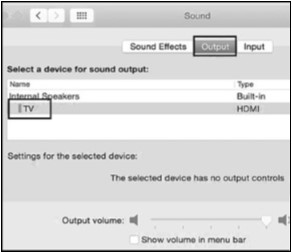|
Article ID: 68
Last updated: 09 Sep, 2019
System Requirements: While the Thunderbolt 3 to Dual DisplayPort Adapter utilizes the reversible USB-C connector, it only supports Thunderbolt 3 enabled computers such as the 2016 and 2017 MacBook Pro. It will not work with computers that are equipped with USB-C but not Thunderbolt 3 such as the Lenovo Yoga 900 or a Chromebook. Check for the Thunderbolt symbol near the port on your computer or refer to the below list. List of Thunderbolt 3 Enabled Computers Dual video-out not working, only one display has video: In order to output video to dual monitors, the computer must support two displays via Thunderbolt 3. Some Thunderbolt 3 enabled computers such as the Razer Blade Stealth, Lenovo Yoga 720, and HP Spectre x360 do not support a second display via Thunderbolt 3. Gtrusted.com maintains a list of computers tested that support a single display or dual display. If your computer is not in the list, please consult your manufacturer for this information. https://gtrusted.com/technology/thunderbolt/thunderbolt3-hosts Connecting to displays with HDMI/DVI/VGA using DisplayPort video converter adapters: Connecting to HDMI/DVI/VGA displays through a DisplayPort to HDMI/DVI/VGA adapter is supported. However, an active adapter is required. Passive adapters will not work. Please follow the links for active adapters. Connecting to 5K displays at 60Hz This adapter supports connecting to a 5K display at 60hz such as the Dell UP2715K UltraHD 5K Monitor using two DisplayPort cables. The monitor has two DisplayPort inputs that connect to each of the adapter's DisplayPort outputs. Symptom: DisplayPort does not work at full 4K 60Hz resolution. The Adapter supports dual 4K 60Hz monitors over DisplayPort connection. A 4K-rated computer source, DisplayPort cable, and display are required. Certain monitors including the LG 31MU97C, Viewsonic VX2475S, Asus PB287Q, and Philips 288P6LJEB may not support 4K 60Hz via DisplayPort. Resolution may be limited to 4K 30Hz. Contact the monitor manufacturer for this information. Symptom: The adapter is not functioning properly on a Windows computer with Thunderbolt 3. Symptoms include no video, flickering video, or low image quality. Solution: Update BIOS, Thunderbolt 3 firmware, Thunderbolt 3 driver, and Intel Graphics driver from the manufacturer's website. For more details, refer to the articles below: BIOS, Firmware and Driver Updates Update Intel Graphics Driver for Windows computers Symptom: The adapter is not recognized / one or more ports are not functional Unplug the adapter and all cables, restart the computer, and then reconnect everything. Symptom: No signal when connecting to some monitors with DisplayPort input and output. The daisy-chainable monitors such as Dell P2415Q and P2715Q 4K monitors have two DisplayPort connectors. One of the DisplayPort connectors is for DisplayPort input while the other one is for DisplayPort output. The DisplayPort output is designed for daisy chaining a second monitor. Please make sure to connect this adapter to the DisplayPort input. Symptom: Audio is not transmitted to monitor through DisplayPort Some monitors do not have built-in speakers. Therefore, audio must be transmitted separately. If audio is supported, please follow the steps below to select the correct playback device: Windows: 1) Open the 'Sound' menu by searching or right clicking the sound icon on the taskbar 2) In the Playback Tab, select the display with DisplayPort 3) Click Set Default 4) Click OK to save the settings
MacOS: 1) Open the Apple Menu and go to System Preferences 2) Click the Sound icon 3) Click the Output tab 4) Select the display with DisplayPort
For more information about our Thunderbolt products including drivers and user manuals, please visit the Thunderbolt page on our website.
Article ID: 68
Last updated: 09 Sep, 2019
Revision: 10
|

